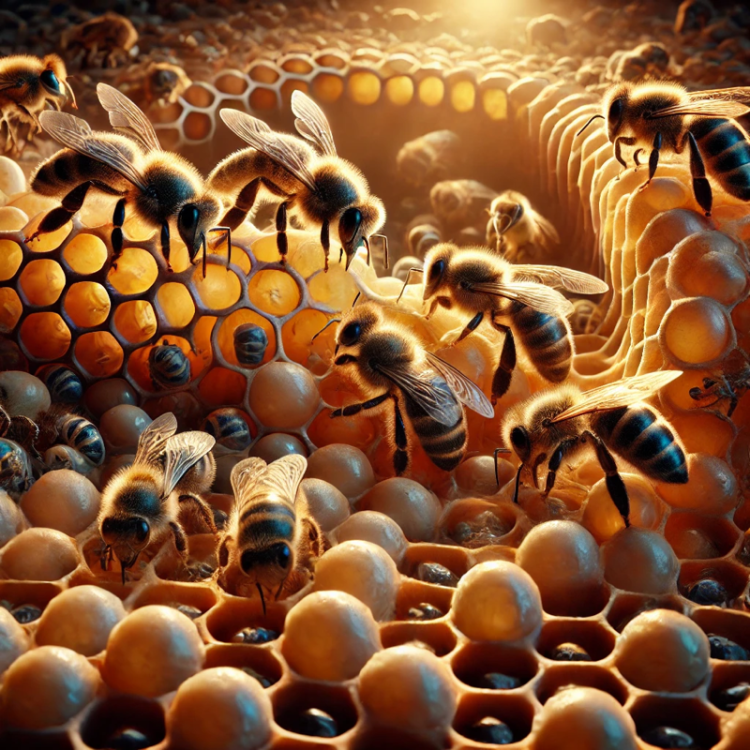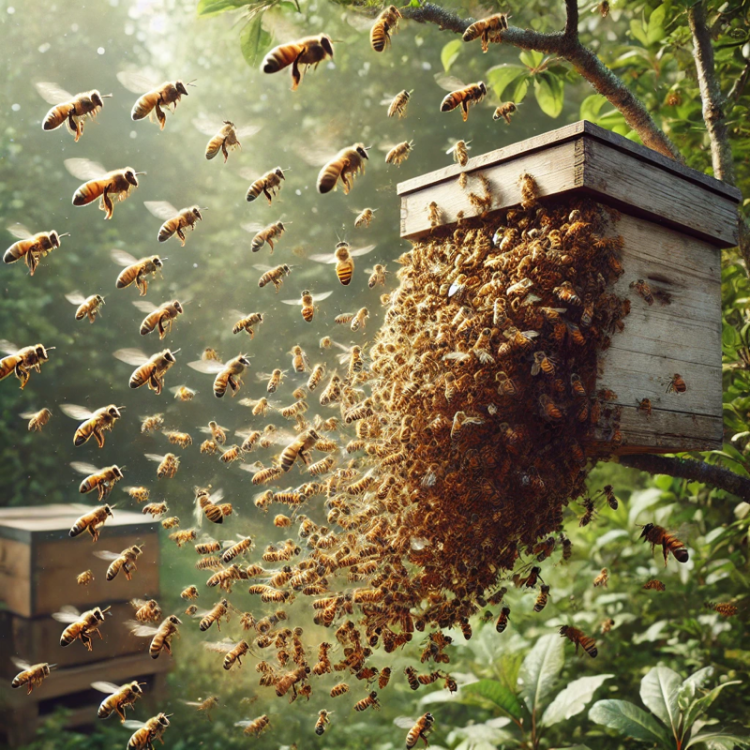Honeybees are some of the most fascinating and organized creatures on the planet. Inside a hive, each bee has a specific role that contributes to the colony's survival. From the moment a worker bee emerges, she takes on various responsibilities, while the queen focuses on reproduction and the drones exist solely for mating. Let’s explore the structure of a hive, the division of labor among bees, and how worker bees maintain population control.
The Roles of Honeybees
A honeybee colony is made up of three types of bees: the queen, worker bees, and drones. Each has a specific role within the hive.
1. The Queen Bee: The Mother of the Colony
The queen is the only fertile female in the colony. Her primary role is to lay eggs—sometimes up to 2,000 per day during peak season. She releases pheromones that regulate the hive’s behavior and ensure unity among the worker bees. Though she does not make decisions regarding hive management, her survival and health are crucial for the colony’s continuation.
2. Worker Bees: The Backbone of the Hive
Worker bees, all of which are female, are the ones that keep the hive running. Their responsibilities change as they age, ensuring that the hive functions smoothly. However, these roles often overlap, meaning a worker bee may take on multiple tasks at the same time, such as cleaning while also caring for larvae:
-
Nurse Bees (Days 1-12): Young worker bees tend to the larvae, feeding them royal jelly or a mixture of honey and pollen.
-
Housekeepers (Days 3-16): These bees clean the hive, remove debris, and keep the brood cells sanitized.
-
Wax Builders (Days 12-18): Specialized worker bees secrete wax and construct honeycomb cells for storage and brood rearing.
-
Undertakers (Days 16-20): Some bees are assigned to remove dead bees from the hive to prevent disease spread.
-
Guard Bees (Days 18-21): These bees protect the hive from invaders, including other insects and rival bees.
-
Foragers (Days 22+ until death): The oldest worker bees leave the hive to collect nectar, pollen, water, and propolis, bringing it back for honey production and sustenance.
Worker bees, despite being unable to reproduce, play a flexible role based on colony needs, environmental factors, and genetic predisposition, making them the true controllers of the hive.
How Worker Bees Control the Population
Unlike many other species, honeybee population management is not dictated by the queen but by the worker bees. They regulate the number of larvae that develop into new workers, queens, or drones through food distribution. For instance, larvae destined to become queens receive a diet rich in royal jelly, while worker and drone larvae get a combination of honey and pollen.
When the hive becomes overcrowded, worker bees respond by constructing new queen cells. This can lead to swarming, a natural process in which the old queen and a portion of the colony leave to form a new hive, ensuring the survival and expansion of the bee population.
The Fate of the Drones: Nature’s Toughest Job
Drones, the male bees, have only one function: mating with a queen. They lack stingers, do not collect food, and do not contribute to hive maintenance. During the mating season, drones leave the hive in search of a virgin queen. Once a drone mates, he may die shortly afterward due to the physical consequences of reproduction, though some studies indicate drones may survive a few more days if they do not mate successfully.
However, for the drones that do not mate, their fate is grim. As winter approaches, worker bees cease feeding the drones and actively remove them from the hive in a process known as “drone eviction.” While most drones are expelled before winter to conserve resources, some colonies may retain a few under specific conditions. The worker bees forcibly push them out, where they starve or succumb to the elements. This practice is essential for conserving food and ensuring the survival of the colony, as every resource must be carefully allocated during the harsher months.
Lessons from the Hive
As we delve into the structured and highly efficient world of honeybees, one cannot help but marvel at their organization and cooperation. What lessons can we take from these industrious insects and apply to our own lives? Whether in teamwork, resource management, or adaptability, honeybees offer a blueprint for efficiency and survival in a complex world. How do you see the influence of nature’s tiny pollinators in your daily life?
A Reflection on Creation
The intricate design and perfect order of honeybee colonies point to the wisdom and foresight of our Creator, Jehovah. Every detail of their existence—from their ability to communicate through dance to their precise role distribution—speaks of His design. Their selfless dedication to the hive mirrors the beauty of cooperation and unity found in God’s creation. Observing these creatures reminds us of Jehovah’s boundless wisdom and his care for even the smallest of His creations.
Sources
-
National Geographic - Honeybee Colony Structure (2021)
-
Smithsonian Institute - The Role of Worker Bees (2019)
-
Scientific American - The Biology of Honeybee Communication (2020)
-
Journal of Apicultural Research - Swarming and Population Control (2022)
-
BBC Earth - The Importance of Pollinators (2018)
-
USDA - The Life Cycle of a Honeybee (2021)
-
Nature - The Impact of Drone Eviction on Hive Health (2023)
-
Rangel & Fisher - Factors Affecting the Reproductive Health of Honeybee Drones (2019)
-
Brutscher et al. - Drone Copulation Factors Regulating Queen Reproduction (2019)
-
Lemanski & Fefferman - Coordination Between the Sexes in Reproductive Timing (2017)
-
Ayup et al. - Analysis of Honeybee Drone Activity During the Mating Season (2021)
-
Fang et al. - Proteome Analysis of Drone and Worker Embryogenesis (2015)
-
Langowska & Zduniak - Impact of Drones on Worker Lifespan (2020)
More from Glimpses of Wonder
Edited by dljbsp
- Tortuga, Roxessence and Mike047
-
 2
2
-
 1
1



2 Comments
Recommended Comments
Join the conversation with your brothers and sisters!
You are posting as a guest. If you are already a member, sign in now to post with your existing account.
Note: Your post will require moderator approval before it will be visible.